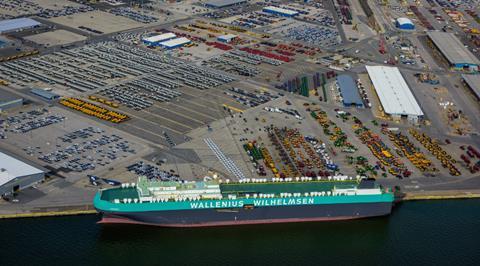Technology certainly has a role to play in the movement of heavy and oversized loads. Captain Fredrik Hedin from Wallenius Wilhelmsen Ocean (WW Ocean) explains how software and advanced technical drawing capabilities contribute to the safe loading and unloading of long, tall and heavy products.

“Whether it is an entirely spherical statue, a 39 m-long conveyor, or ten luxury train carriages, my job is to determine how terminal staff handle and secure our oversized or unusual breakbulk shipments,” said Hedin.
His company follows the International Maritime Organization (IMO) Code of Safe Practice for Cargo Stowage and Securing (CSS Code) for lashing and stowage to ensure safe and optimal loading practices. However, some cargoes require extra planning.
One of the first things WW Ocean does when presented with this type of cargo is use a computer-aided design (CAD) programme to create detailed technical drawings. “In a nutshell, these drawings allow us to model potential solutions for carrying breakbulk by assessing the weight of an object and its footprint,” explained Hedin.
“Technical drawings help us determine what type of handling equipment and lashings should be used for a shipment, and crucially, if we need to adapt any of our handling equipment to load or discharge a product.”
As an example, Hedin pointed to a current project that involves the shipment of a 105-tonne cable reel: “It is a heavy product, but the footprint is relatively small – 3.7 m long and 3.6 m wide. As a result, it does not easily fit onto any of our existing roll trailers. Our 9.1 m roll trailer might be capable of carrying 140 tonnes, but to do so, the weight needs to be distributed across both edges of the trailer.
“This is where technical drawings come to the rescue, by calculating the optimal position for a product on the handling equipment. Once that is determined, we can mock-up creative solutions, such as welding beams directly onto the roll trailer to ensure the reel is properly supported during loading and discharge from our vessel.”
This sometimes results in the design and manufacture of custom handling equipment. Here, technical drawings also have a role to play – highlighting important considerations, such as vessel clearance.
Alongside the CAD software, WW Ocean uses Excel to calculate lashing, ramp inclination and deck capacities, and also consider vital port information, such as berth height and tidal water.
“When all of these factors have been weighed up, the next stage is to create a method statement that explains to our customer what we are going to do, how we plan to do it and who will oversee everything,” added Hedin. “Collaboration and communication between all parties involved – from our customers to our equipment department and the team at the port of load – are essential to ensure all shipments are carried out safely.”
















